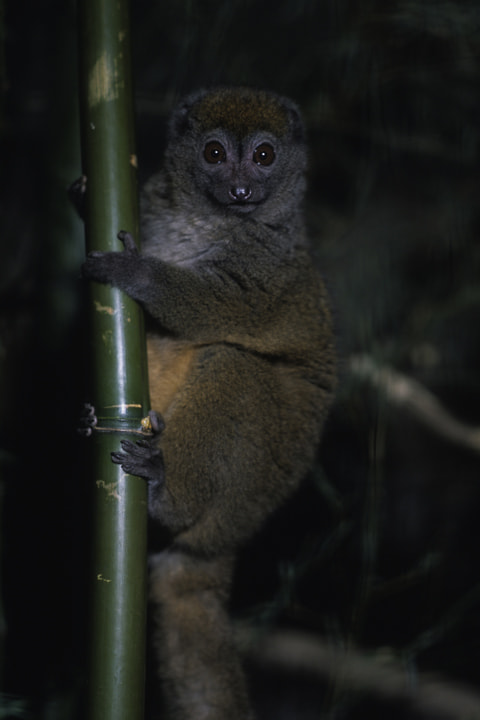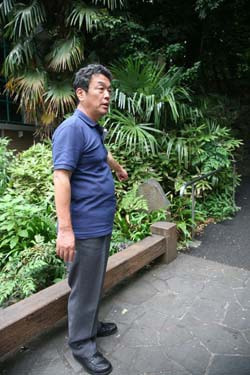
Q: Why was the zoo built in Ueno Park?
Komiya: The first Domestic Industrial Exposition held in 1877 led to the construction of the zoo. Hisanari Machida and Yoshio Tanaka played the central role. They established an animal-breeding farm, which was modeled on "Menagerie" attached to le Mus?um national d'histoire naturelle, Paris, as an adjunct facility of the present-day Tokyo National Museum at low grounds that were a less favorable environment surrounded by the hill of Ueno. In the present, the zoo area is about 10 times larger than that of the original farm. The monorail system connecting the East and West Gardens was built in 1957 for the first time in Japan, but I heard that it was an operation to test whether the system could be used as an urban transportation system.
Q: I heard that the Ueno Zoo has attached a great deal of importance to breeding of aye-ayes and lemurs native to Madagascar.
Only Duke University in the United States and the Ueno Zoo have succeeded to breed aye-ayes. The Ueno Zoo has now kept eight aye-ayes, and six of them were born here. When we took an introduction leaflet of the aye-ayes to international conferences, other participants were impressed, saying, "Oh, You have kept aye-ayes!" and their attitudes changed. The number of Lidth's jays native to the Amami Islands has modestly increased in their natural habitat, and they were raked lower as protected species, but we should conduct research on them when there are a large number of them. Even if four to five chicks are hatched in a nest, the chicks are eaten by crows, and most of them do not grow up, so we try to rear the weakest chick. (continued in the lower column)
Q: Can alien species adapt to the Japanese climate?
Although there are about 4,000 species of mammals in the world, less than 10% of them are kept in zoos. Also, many of them are difficult to be raised. We have used air conditioners and managed to raise them. Sumatran tigers are kept in the Ueno Zoo, so their house is heated in winter. Extra energy, such as that of air conditioning, can be saved if we keep animals, such as tigers in China, native to a region of which climate is similar to that of Japan. In order to preserve species, animals should be bred in various parts of the world. It is good to breed Siberian tigers, which live in the cold climate of Siberia, in Hokkaido, but if they are bred in the warm Kyushu Region, the species might change into another species when considered over a period of tens of thousands of years. Therefore, equipment, such as an air conditioner, is necessary. (continued in the right column)
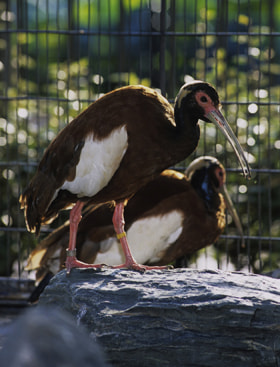
A Madagascar Ibis which came from Tsimbazaza Zoo in Madagascar in 2001
Q: In zoos and aquariums around Japan, only distinctive displays are publicized. What do you think is the future of zoos?
I think the Ueno Zoo will be an environmental and cultural zoo in the future. When I am asked, "What is the best asset of the Ueno Zoo?" you expect that I would answer, "It is the giant panda." However, it is Shinobazuno Pond. We transferred cormorants, which were dying out in the Bay of Tokyo, to the Ueno Zoo. When the number of cormorants increased to about 1,000, trees and plants withered due to their droppings, and Shinobazuno Pond was filled with the cormorants and lotuses. Islands in the pond were covered with their droppings and turned white. However, when we released an eagle which could not fly onto one of the islands, plants on the island grew back. Then, when we released white birds into the pond, they ate the lotus roots. Now, we spend maintenance costs of lotuses, but if the pond's biodiversity is fully recovered, we do not need to spend the costs. In this way, we want to explain about ecosystems, which are easy to understand even for elementary school students.
If we boast about animals displayed in the Ueno Zoo, other zoos might imitate what we have done. However, other zoos cannot imitate the natural environment, that is to say, Shinobazuno Pond, the five-storied pagoda, the Todo family's grave, Kankan-tei that has a sunken fireplace used by Iemitsu Tokugawa, and 130 years of its history.
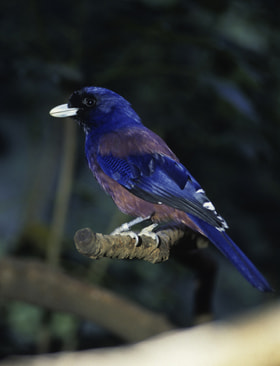
A Lidth's jay which came from Amami Oshima in 1995
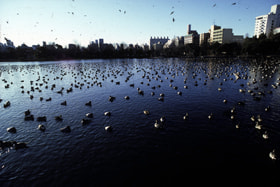
Shinobazuno Pond where biodiversity is being recovered


Shinobazuno Pond where biodiversity is being recovered









